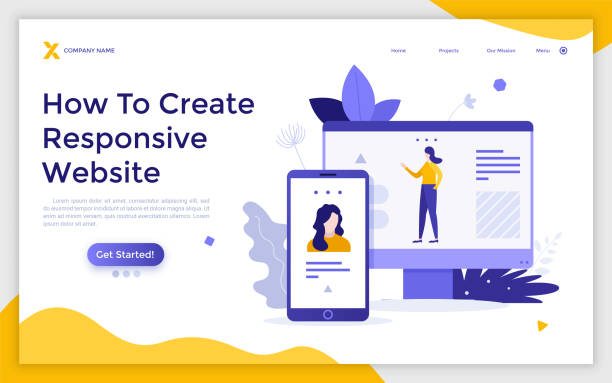Introduction to the Importance of Multilingual Website Design in Today’s World

In the era of #globalization and seamless connectivity, #marketexpansion beyond geographical borders is considered vital for businesses.
#Globalusers worldwide access the internet with diverse languages and cultures.
One of the most effective solutions to reach this vast audience is multilingual website design.
This explanatory and analytical approach shows how a website offered in multiple languages can increase organic traffic and improve conversion rates.
Because users prefer to receive information in their native language.
This preference not only provides greater convenience for the user but also creates a deeper sense of trust and connection.
Statistics show that a significant portion of internet users do not have English as their first language.
Therefore, ignoring this large group of audiences means missing countless business opportunities.
A multilingual website enables businesses to convey their message to a global audience and significantly expand their market share.
This is considered a strong competitive advantage in today’s saturated markets.
Is your current e-commerce website not generating the expected sales for you?
Rasaweb is an expert in professional e-commerce website design!
✅ An attractive and user-friendly website aimed at increasing sales
✅ High speed and security for an ideal shopping experience⚡ Get free consultation for online store design with Rasaweb!
Competitive Advantages of Multilingual Website Design for SEO and User Experience
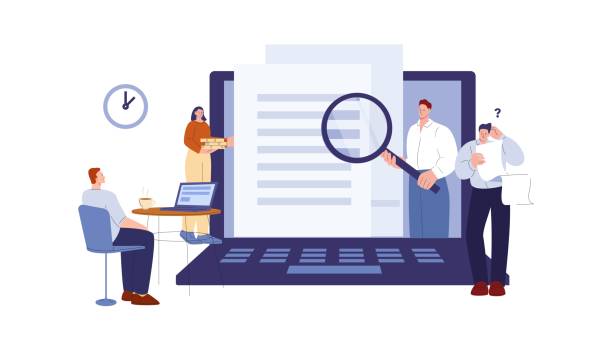
SEO and user experience are two main pillars of website success, and multilingual website design significantly helps both.
From an SEO perspective, creating content in different languages means targeting more keywords in various languages.
This helps your website appear higher in local search results for different languages.
Google and other search engines love multilingual websites, especially if they are configured correctly using Hreflang tags.
These tags tell search engines that different versions of a page exist for different languages or geographical regions, preventing duplicate content issues.
On the other hand, improving user experience (UX) is another crucial benefit.
When users can browse the website in their native language, they feel more comfortable and trusting.
This comfort leads to increased time spent on the site, reduced bounce rate, and ultimately, increased engagement and conversions.
A specialized and guided approach to multilingual website design not only introduces you to new markets but also strengthens your credibility and branding globally.
This intelligent strategy is a sure way to achieve sustainable growth and competitiveness on an international scale.
Essential Steps Before Starting a Multilingual Website Design Project
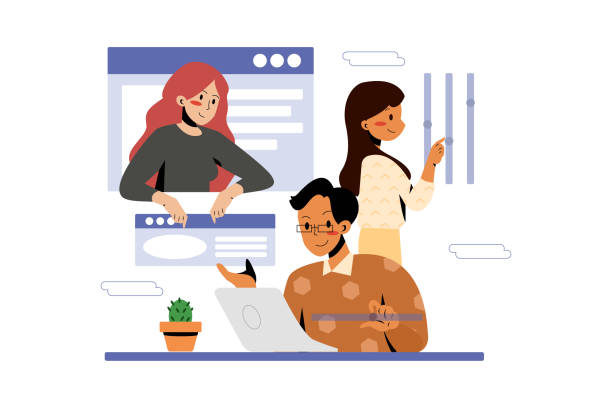
Before delving into the technical aspects of multilingual website design, precise and strategic planning is of paramount importance.
This educational and guiding phase helps you prevent resource waste and chart a clear path for your project.
The first step is precise target audience analysis.
You need to know which languages and geographical regions have the most potential for your business.
Do you intend to cover only major languages, or do you need deeper localization for specific regions?
After that, it’s time to evaluate existing content.
Is all your current content suitable for translation?
Which sections should be prioritized, and which sections require complete rewriting to align with the target culture?
Choosing the right Content Management System (CMS) is also a crucial decision.
Some CMSs, like WordPress with specific plugins (such as WPML) or Drupal, offer powerful multilingual capabilities either natively or through add-ons.
Precise budgeting for translation, localization, technical development, and maintenance should also not be overlooked.
These include the cost of professional translators, localization tools, and ongoing technical support.
Table 1: Multilingual Website Planning Checklist
| Stage | Description | Importance |
|---|---|---|
| Target Audience Analysis | Identifying target languages and markets with the highest potential. | Very High |
| Content Evaluation and Preparation | Reviewing current content and identifying localization needs. | High |
| CMS and Tools Selection | Choosing appropriate platforms and plugins for multilingual management. | Very High |
| Budget Planning | Allocating financial resources for translation, development, and maintenance. | High |
| URL Structure Selection | Deciding on subdomains, subdirectories, or separate domains. | Very High |
Technical Aspects of Multilingual Website Implementation and Key Points

The technical implementation of multilingual website design involves several specialized and explanatory aspects that are essential for proper functionality and SEO.
One of the most important decisions is choosing the appropriate URL structure.
You can use subdomains (e.g., en.example.com), subdirectories (e.g., example.com/en/), or dedicated top-level domains (e.g., example.co.uk).
Each has its advantages and disadvantages and should be chosen based on SEO goals and the overall site structure.
Correct use of Hreflang tags is crucial.
These tags help search engines like Google show the correct version of a page to users based on language and geographical region, preventing duplicate content penalties.
Server configuration and Content Delivery Network (CDN) setup are also important for improving site loading speed for international users.
Placing servers near target audiences or using a CDN significantly improves user experience.
Another point relates to the language switcher.
This switch should be easily accessible and allow users to select their desired language.
This switch should not change based on the user’s geographical location, as users residing in one country might want to view content in a language other than that country’s official language.
A comprehensive approach to multilingual website design requires attention to all these technical details to ensure your website is not only accessible but also optimized and efficient.
Tired of your e-commerce website not generating as much revenue as its potential allows? Rasaweb, specializing in professional e-commerce website design, solves this problem forever!
✅ Increased sales rate and revenue
✅ High loading speed and unparalleled user experience
⚡ Get free consultation for e-commerce website design
Content Translation and Localization Beyond Words

Translation is not merely rendering words from one language to another; rather, in the context of multilingual website design, it involves deeper localization.
This explanatory and educational phase shows how content should align with the culture, customs, and sensitivities of the local audience.
Localization goes beyond language to include changes in currency, date and time formats, phone numbers, addresses, and even colors and images.
For example, an image that carries a positive meaning in one culture might cause misunderstanding in another.
Using local idioms and dialects can also help create a greater sense of closeness with the audience.
For example, Spanish in Spain has differences from Spanish in Mexico that should be considered.
Additionally, marketing and advertising messages must be localized in a way that achieves the necessary cultural impact.
Slogans or product names may need to be revised to retain their meaning and appeal in the target language.
Using native translators and specialists in your website’s subject matter is crucial to ensure the accuracy and quality of the translation.
Machine translations can be a good starting point, but they can never replace the deep cultural and linguistic understanding of a native human.
A correct localization process in multilingual website design not only aids effective communication but also prevents costly cultural and marketing mistakes.
Common Challenges and Pitfalls in Multilingual Website Development

Despite numerous benefits, multilingual website design is not without challenges and includes common pitfalls that should be approached with an analytical perspective and thought-provoking content.
One of the biggest challenges is the continuous management and maintenance of content.
With the addition of each new language, the volume of content for updates and maintaining consistency significantly increases.
This can lead to inconsistencies in information and even translation errors.
SEO issues can also arise.
Incorrect use of Hreflang tags or the presence of duplicate content can lead to penalties by search engines and a decrease in SEO ranking.
Furthermore, site loading speed (Performance) for users in distant regions can be a challenge, especially if web hosting is not properly optimized.
Are your current infrastructures capable of supporting multiple language versions without compromising quality?
Security is also a concern; the more versions a website has, the more potential entry points for attacks increase.
Managing user comments and customer support in different languages also requires separate resources and processes.
Is your support team prepared to respond to customers in different languages?
Addressing these challenges requires precise planning, the use of appropriate tools, and a long-term commitment to maintenance to ensure the success of the multilingual website design project.
Practical Tools and Platforms for Managing Multilingual Websites
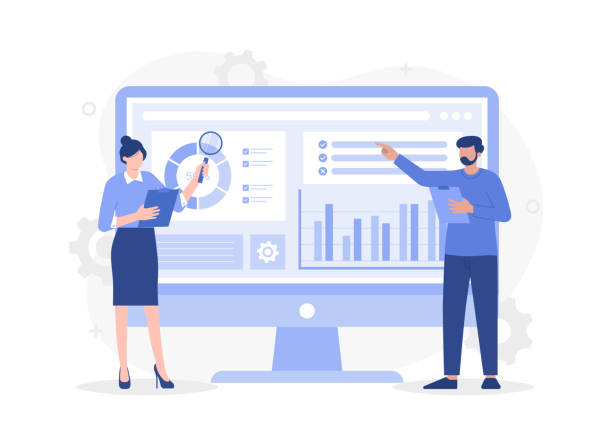
To effectively manage a multilingual website design, using appropriate tools and platforms is crucial.
This specialized and guiding section introduces some of the most common and efficient options.
In Content Management Systems (CMS), WordPress, with plugins like WPML (WordPress Multilingual Plugin) or Polylang, is one of the most popular choices.
WPML allows for full translation of content, themes, menus, and even plugins, and fully supports Hreflang tags.
Drupal also has powerful built-in multilingual capabilities, making it suitable for larger and more complex projects.
For e-commerce websites, platforms like Shopify and Magento also offer internal tools or plugins to support multilingualism.
Beyond CMS, Translation Management Systems (TMS) like Smartling, Phrase, or MemoQ help organize the translation process.
These systems facilitate collaboration among translators, project managers, and reviewers, automating the translation workflow.
These tools not only increase efficiency but also help maintain the consistency and quality of translations over time.
Using professional translation services that leverage these platforms can significantly enhance the final quality of multilingual website design.
The correct selection of these tools depends on your project size, budget, and specific business needs.
Table 2: Popular Tools for Managing Multilingual Websites
| Tool/Platform Name | Type | Main Use |
|---|---|---|
| WPML | WordPress Plugin | Comprehensive management of multilingual content in WordPress. |
| Polylang | WordPress Plugin | Lighter option for creating multilingual websites in WordPress. |
| Drupal | CMS | Powerful built-in capabilities for complex multilingual websites. |
| Smartling | Translation Management System (TMS) | Automation and management of large-scale translation processes. |
| Transifex | Localization Platform | Translation and localization management for developers and teams. |
Measuring Success and Data Analysis in Multilingual Websites

After launching and maintaining a multilingual website design, measuring success and data analysis is essential for continuous improvement.
This analytical and educational section focuses on the importance of specific Key Performance Indicators (KPIs) for different language versions.
Using tools like Google Analytics, you can track incoming traffic based on language and geographical region.
This allows you to see which languages attract the most visitors and which regions require more attention.
The Conversion Rate for each language version should be carefully examined.
Are Spanish users converting as much as English users?
If not, there might be a need for further localization of content or user experience for that specific language.
Engagement Metrics such as time spent on site, pages visited, and bounce rate should also be analyzed for each language.
A high bounce rate in a particular language could indicate poor translation quality or a lack of content relevance for local audiences.
A/B testing for localized versions can help you find the best titles, Calls to Action, and design elements for each culture.
This data-driven approach ensures that your investment in multilingual website design yields the highest returns and continuously improves.
Does your company’s website create a professional and lasting first impression in the minds of potential customers? Rasaweb, with its professional corporate website design, not only represents your brand’s credibility but also paves the way for your business growth.
✅ Creation of a powerful and trustworthy brand image
✅ Attracting target customers and increasing sales
⚡ Get free consultation
Future Trends in Multilingual Website Design and Artificial Intelligence

The future of multilingual website design appears more exciting and engaging with the emergence of Artificial Intelligence (AI) and technological advancements.
This news and analytical section examines emerging trends.
Machine translation with the help of AI, especially Neural Machine Translation (NMT), is rapidly advancing.
These technologies are capable of producing higher quality translations closer to natural human language.
This means that the content translation process will become faster and more cost-effective, although human translators will still be needed for editing and reviewing.
Optimization for voice search in multiple languages is also a growing trend.
With the increasing use of voice assistants like Siri and Google Assistant, websites need to prepare their content to answer verbal queries in different languages.
Machine learning can help personalize content for each user, based on language, geographical location, and even cultural preferences.
This could mean displaying entirely different content to different users, even if they are from the same country but prefer different languages.
More comprehensive platforms for multilingual website design are emerging that integrate all translation, localization, and management processes into a single environment.
These advancements will make the development and maintenance of multilingual websites easier and more efficient, enabling businesses to access global markets more quickly.
Conclusion and Strategic Recommendations for Global Reach
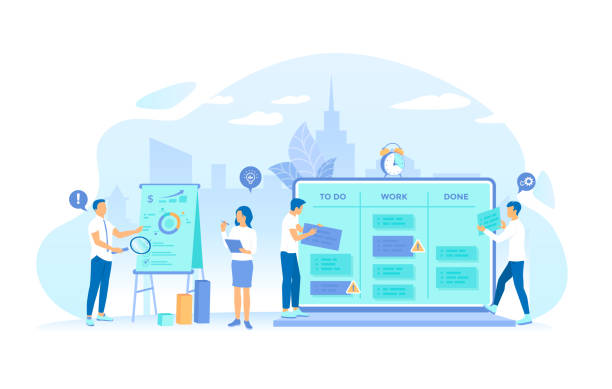
Ultimately, multilingual website design is a strategic and vital investment for any business seeking to expand its presence in global markets.
This guiding and specialized section summarizes its importance and provides practical recommendations.
With proper implementation, a multilingual website not only increases your reach but also improves user experience, strengthens SEO, and enhances your brand’s international credibility.
For achieving sustainable success, precise planning, selecting appropriate tools, and paying attention to technical and cultural details are essential.
Always remember that translation goes beyond words, and deep localization is crucial for creating a genuine connection with your audience.
Using native and expert translators, as well as leveraging advanced translation management systems, can ensure the quality and efficiency of the process.
Continuous monitoring and data analysis also help you improve your website’s performance in each language and adjust your strategies based on real feedback.
Given the growing trend of AI and automation, preparing for the future and embracing new technologies in translation and localization is also of great importance.
A successful multilingual website design is not a one-time project but an ongoing process that requires continuous commitment and updates to remain competitive in the digital world and achieve your global goals.
Frequently Asked Questions
| Question | Answer |
|---|---|
| What is a multilingual website? | It is a website whose content is made available to users in several different languages. |
| Why should we design a multilingual website? | To expand reach to international audiences, increase site traffic, improve SEO in target markets, and provide a better user experience for non-Persian speaking users. |
| What are the main methods for implementing a multilingual website? | Using subdomains (e.g., en.mysite.com), using subdirectories (e.g., mysite.com/en/), and using separate domains for each language (e.g., mysite.com and mysite.de). |
| Which implementation method is better for SEO? | Generally, using subdirectories (language folders) is often recommended due to the transfer of the main domain’s authority to other languages. |
| What is the Hreflang tag and what is its use? | It is an HTML tag or HTTP Header that informs search engines which version of a page is suitable for which language or geographical region. This tag prevents duplicate content and improves SEO. |
| How is a Language Switcher designed? | Usually by using a dropdown menu, button, or flag in the site’s header or footer, which allows the user to select their desired language. |
| Is automatic (machine) translation suitable for a multilingual website? | No, machine translation usually has low quality and many errors that can harm the site’s credibility. Human translation or a combination of human translation and machine editing is recommended. |
| What are the most important SEO tips in multilingual website design? | Correct use of the Hreflang tag, having an appropriate URL structure for each language, translating meta titles and descriptions, translating main content, and internal linking between related language versions. |
| Should all site content be translated? | It depends on the strategy. Usually, the main and important content of the site should be translated. Less important sections or blogs may not require full translation. |
| What are the main challenges in multilingual website design? | Content management in different languages, translation costs, technical issues related to URLs and language tags, theme compatibility with right-to-left (RTL) languages like Persian and Arabic, and multilingual SEO management. |
And other services of Rasa Web Advertising Agency in the field of advertising
Designing intelligent pricing strategies for beverage advertisements
Improving user experience with interactive ads for beverage products
The role of targeted ads in increasing online sales of beverages
Training beverage vendors to use digital advertising tools
The impact of beverage advertisements on customer purchasing decisions
And hundreds of other services in the field of internet advertising, advertising consultation, and organizational solutions
Internet Advertising | Advertising Strategy | Advertorials
🚀 Transform your business’s digital presence with Rasa Web’s internet advertising strategies and advertorials.
📍 Tehran, Mirdamad Street, next to Bank Markazi, Southern Kazeroon Alley, Ramin Alley, No. 6

